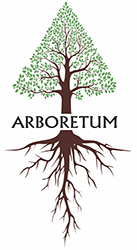Honey Locust
Honey Locust is a fast-growing, large tree 20-40 meters tall, grows even on the poorest soils, a good pioneer, nitrogen fixer and wonderful honey plant.
Honey Locust is a fast-growing, large tree 20-40 meters tall, grows even on the poorest soils, a good pioneer, nitrogen fixer and wonderful honey plant.
The correct botanical name is Gleditsia Triacanthos (Three-Pricked) - a powerful tree with a beautiful, openwork, spreading crown, a representative of the legume family. Widely used in landscaping and culture. Carries haircut, thanks to large spikes on the trunk and branches, often used as a hedge.
The natural habitat is North America, the central part of the United States. At the same time, it has gained popularity and is cultivated on all continents. Honey Locust lives up to 300 years. In the first year or two of a seedling's life, depending on the planting zone, shelter for the winter may be required. Further - it tolerates even severe frosts.
Gledichia develops a powerful and deep root system. Thanks to this, it grows well on the poorest, sandy and saline soils. Honey Locust does not tolerate only boggy. It is used as a pioneer plant and well saturates the soil with nitrogen, which creates favorable conditions for other, more demanding species.
During flowering, it releases a huge amount of nectar. Gledichia's honey gives a green tint, does not crystallize for a very long time, has a pleasant aroma and taste.
It is widely used in windbreaks, to strengthen coasts and slopes, as well as in decorative landings. Gledichia grows well in the city, withstanding gas contamination.
It is considered a poisonous plant due to which it is not used in official medicine. Despite this, Honey Locust is successfully used in folk medicine in the treatment of diseases of the liver and stomach, an anti-inflammatory agent. When treating, it is very important to observe the dosage of drugs.
The wood of Gledichia is close in density and in physical and mechanical properties to oak. Widely used in the manufacture of furniture, plywood, decorative products. In construction less resistance to rot and pests is lower.
Because of the thorns, almost no birds nest on the trees of Gledichia, although the bees love it very much. Gledichia is very resistant to parasites and pests, so it does not require care. Just a ripe bean plant, sometimes affected by insects.
On the ARBORETUM.LIVE website you can purchase / order seeds and seedlings of Gledichia Trehkolyuchkova and other species.


